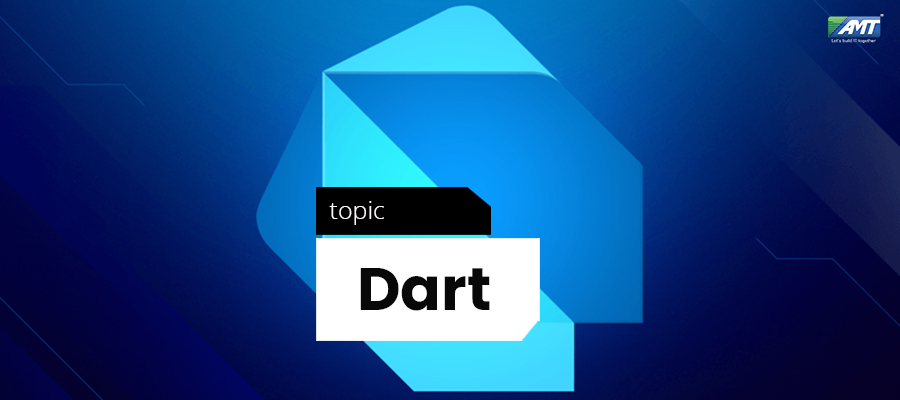Dart is a client-optimized programming language for apps on multiple platforms. It is developed by Google and is used to build mobile, desktop, server, and web applications. Dart is an object-oriented, class-based, garbage-collected language with C-style syntax. Dart can compile to either native code or JavaScript. It supports interfaces, mixins, abstract classes, reified generics, and type inference.
Dart was unveiled at the GOTO conference in Aarhus, Denmark, October 10–12, 2011. The project was founded by Lars Bak and Kasper Lund. Dart 1.0 was released on November 14th, 2013.
Dart initially had a mixed reception and the Dart initiative has been criticized by some for fragmenting the web, due to the original plans to include a Dart VM in Chrome. Those plans were dropped in 2015 with the 1.9 release of Dart to focus instead on compiling Dart to JavaScript.
In August 2018, Dart 2.0 was released, with language changes including a sound type system.
Recently released Dart 2.6 is accompanied with a new extension dart2native. The feature extends native compilation to the Linux, macOS, and Windows desktop platforms. Earlier developers were able to create new tools only using Android or iOS devices. Moreover, with this extension it becomes possible to compose a Dart program into self-contained executables. Thus, according to the company representatives, it’s not obligatory now to have Dart SDK installed, the self-contained executables can now start running in a few seconds. The new extension is also integrated with Flutter toolkit, thus making it possible to use the compiler on small services (backend supporting for example).
- Standardization
Ecma International has formed technical committee TC52 to work on standardizing Dart, and inasmuch as Dart can be compiled to standard JavaScript, it works effectively in any modern browser. Ecma International approved the Dart language specification first edition in July 2014, at its 107th General Assembly, and a second edition in December 2014. The latest specification is available at Dart language specification.
There are four ways to run Dart code:
- Compiled as JavaScript
- To run in mainstream web browsers, Dart relies on a source-to-source compiler to JavaScript. According to the project site, Dart was “designed to be easy to write development tools for, well-suited to modern app development, and capable of high-performance implementations.” When running Dart code in a web browser the code is precompiled into JavaScript using the dart2js compiler. Compiled as JavaScript, Dart code is compatible with all major browsers with no need for browsers to adopt Dart. Through optimizing the compiled JavaScript output to avoid expensive checks and operations, code written in Dart can, in some cases, run faster than equivalent code hand-written using JavaScript idioms.
- Stand-alone
- The Dart software development kit (SDK) ships with a stand-alone Dart VM, allowing Dart code to run in a command-line interface environment. As the language tools included in the Dart SDK are written mostly in Dart, the stand-alone Dart VM is a critical part of the SDK. These tools include the dart2js compiler and a package manager called pub. Dart ships with a complete standard library allowing users to write fully working system apps, such as custom web servers.
- Ahead-of-time compiled
- Dart code can be AOT-compiled into machine code (native instruction sets). Apps built with Flutter, a mobile app SDK built with Dart, are deployed to app stores as AOT-compiled Dart code.
- Native
- Dart 2.6 with dart2native compiler to compile to self-contained, native executables code. Before Dart 2.6, this feature only exposed this capability on iOS and Android mobile devices via Flutter.
- To achieve concurrency, Dart uses isolates, which are independent workers that do not share memory, but instead use message passing. This is similar to Erlang processes (see also Actor model). Every Dart program uses at least one isolate, which is the main isolate. Since Dart 2 the Dart web platform no longer supports isolates, and suggests developers use Web Workers instead.
- Snapshots are a core part of the Dart VM. Snapshots are files which store objects and other runtime data.
- Script snapshots
- Dart programs can be compiled into snapshot files. These files contain all of the program code and dependencies preparsed and ready to execute. This allows fast startups.
- Full snapshots
- The Dart core libraries can be compiled into a snapshot file which allows fast loading of the libraries. Most standard distributions of the main Dart VM have a prebuilt snapshot for the core libraries which is loaded at runtime.
- Object snapshots
- Dart is a very asynchronous language. With this, it uses isolates for concurrency. Since these are workers which pass messages, it needs a way to serialize a message. This is done using a snapshot, which is generated from a given object, and then this is transferred to another isolate for deserializing.
- Google has introduced Flutter for native mobile app development on both Android and iOS. Flutter is a mobile app SDK, complete with framework, widgets, and tools, that gives developers a way to build and deploy mobile apps, written in Dart. Flutter works with Firebase and other mobile app SDKs, and is open source.
- The Dart SDK contains two Dart-to-JavaScript compilers. During development, dartdevc supports quick refresh cycles. For the final version of an app, dart2js produces deployable JavaScript.
The first compiler to generate JavaScript from Dart code was dartc, but it was deprecated. The second Dart-to-JavaScript compiler was Frog. It was written in Dart, but never implemented the full semantics of the language. The third Dart-to-JavaScript compiler was dart2js. An evolution of earlier compilers, dart2js is written in Dart and intended to implement the full Dart language specification and semantics.
On March 28, 2013, the Dart team posted an update on their blog addressing Dart code compiled to JavaScript with the dart2js compiler, stating that it now runs faster than handwritten JavaScript on Chrome’s V8 JavaScript engine for the DeltaBlue benchmark.
The above is a brief about Dart. Watch this space for more updates on the latest trends in Technology.
